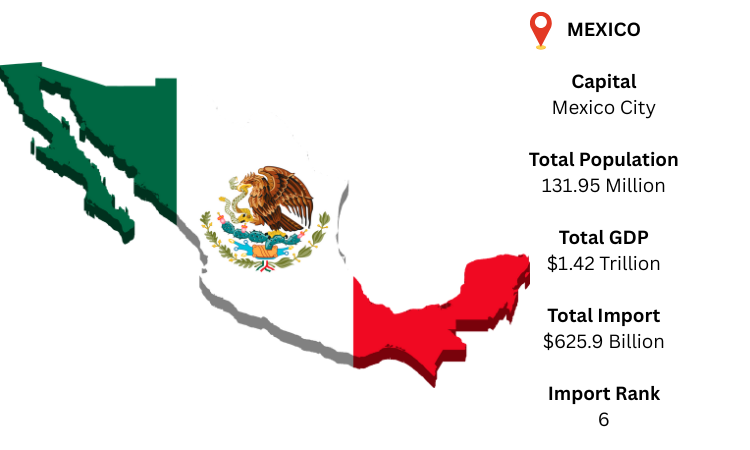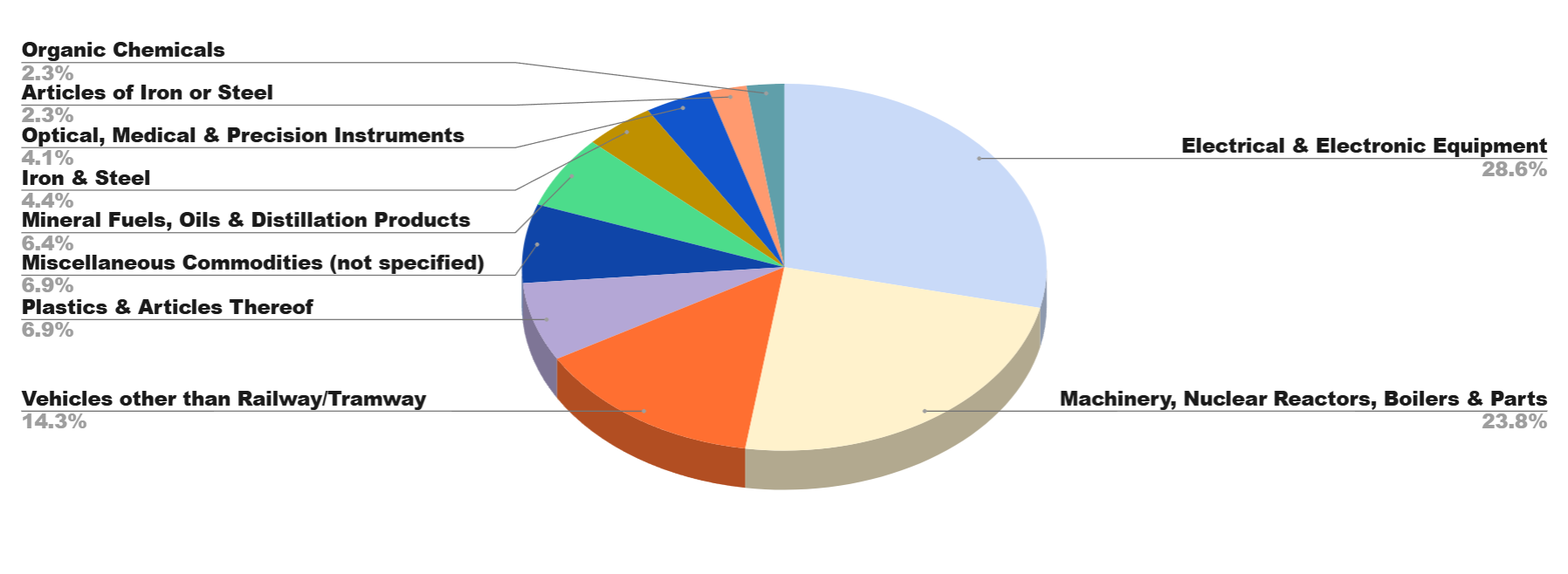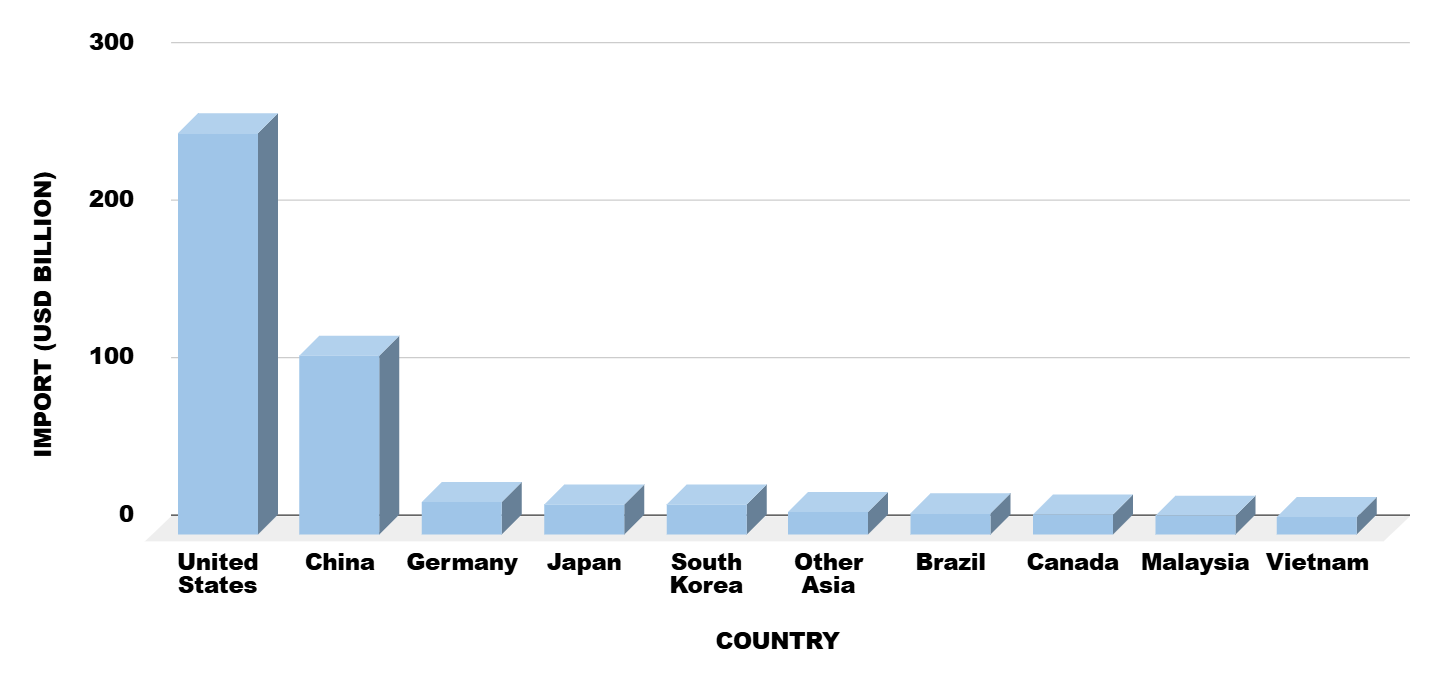Mexico is a country in North America that borders Guatemala and Belize to the south and the United States to the north. Mexico City serves as the capital. As per Mexico import data, with a GDP of over USD 1.42 trillion in 2024, Mexico ranked as the world's fifteenth biggest economy. With the largest recorded import volume of USD 625.9 billion in 2024, the nation came in sixth place globally. Mexico's largest importer, the United States, provides commodities worth over USD 255 billion. Electrical and electronic equipment is the product category that Mexico imports the most of, making up over 21% of all imports.
According to the Mexico customs data, Mexico's manufacturing-based economy and close ties to international supply networks, particularly through the USMCA, significantly influence its import profile. With an increase in imports from South Korea and China, the nation is still broadening its import base.



